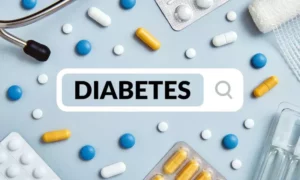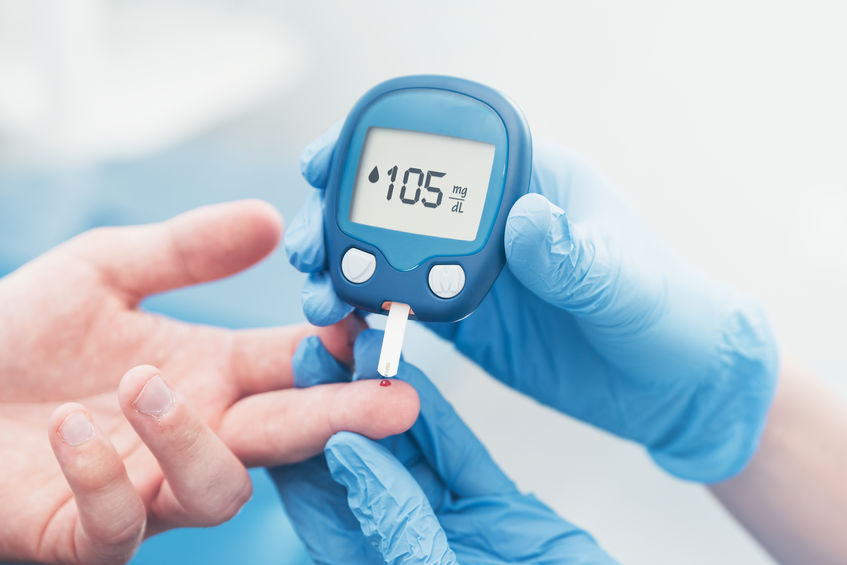In the quest to manage diabetes effectively, understanding antihyperglycemic medications is pivotal. These medications play a crucial role in controlling high blood sugar levels in individuals with diabetes, helping to prevent complications and maintain overall health. In this comprehensive guide, we delve into the different types of antihyperglycemic drugs, their mechanisms of action, benefits, and potential side effects.
Contents
What Do Antihyperglycemic Medications Do?
 Antihyperglycemic medications are designed to help control blood sugar levels in individuals with diabetes. These medications work in various ways to reduce the high levels of blood sugar that characterize diabetes. Some antihyperglycemics increase insulin production in the pancreas. While others improve the body’s sensitivity to insulin or slow down the absorption of sugar in the intestines.
Antihyperglycemic medications are designed to help control blood sugar levels in individuals with diabetes. These medications work in various ways to reduce the high levels of blood sugar that characterize diabetes. Some antihyperglycemics increase insulin production in the pancreas. While others improve the body’s sensitivity to insulin or slow down the absorption of sugar in the intestines.
Each class of antihyperglycemic medication has its mechanism of action and potential side effects. And, making them suitable for different individuals depending on their specific needs and medical history. The goal of these medications is to maintain blood sugar levels within a target range, thereby reducing the risk of complications associated with diabetes such as heart disease, kidney failure, and nerve damage.
What Are Examples Of Antihyperglycemic Medications?
Antihyperglycemic medications are used to lower high blood sugar levels in individuals, particularly those with diabetes. These medications come in various classes, each with a different mechanism of action. Here are some common examples:
Metformin
Metformin is often the first-line medication prescribed for type 2 diabetes due to its effectiveness, safety profile, and the fact that it doesn’t cause weight gain. This is a common concern with some other diabetes medications. It primarily works by decreasing glucose production in the liver and improving insulin sensitivity. This means that your body can use insulin more effectively. Metformin also helps to lower glucose absorption from the intestines.
Sulfonylureas (e.g., glipizide, glyburide, glimepiride)
Sulfonylureas are a class of medications that help your body secrete more insulin. They work by stimulating the beta cells of the pancreas. These medications are effective in lowering blood sugar but carry a risk of hypoglycemia, especially if meals are skipped or delayed. They can also contribute to weight gain, which can be a concern for people with type 2 diabetes. When prescribing sulfonylureas, doctors typically start with a low dose and adjust as necessary to minimize the risk of hypoglycemia.
Meglitinides (e.g., repaglinide, nateglinide)
Meglitinides, like sulfonylureas, stimulate the pancreas to produce more insulin. However, they have a shorter action duration and a faster onset, which means they work quickly to lower blood sugar levels after meals. This rapid action helps reduce the risk of hypoglycemia when compared to sulfonylureas. These medications are typically taken before meals and can be beneficial for people who have unpredictable meal schedules because they can be taken only when needed. They are particularly useful in controlling post-meal blood sugar spikes.
Thiazolidinediones (e.g., pioglitazone, rosiglitazone)
 Thiazolidinediones, also known as TZDs, work by improving insulin sensitivity in muscle and fat tissue. It helps the body use insulin more effectively. They also reduce the production of glucose in the liver. While effective in lowering blood sugar levels, TZDs have been associated with several significant side effects, including weight gain, an increased risk of heart failure, and bone fractures. Due to these potential risks, they are not the first choice for diabetes treatment.
Thiazolidinediones, also known as TZDs, work by improving insulin sensitivity in muscle and fat tissue. It helps the body use insulin more effectively. They also reduce the production of glucose in the liver. While effective in lowering blood sugar levels, TZDs have been associated with several significant side effects, including weight gain, an increased risk of heart failure, and bone fractures. Due to these potential risks, they are not the first choice for diabetes treatment.
DPP-4 Inhibitors (e.g., sitagliptin, linagliptin)
Dipeptidyl peptidase-4 (DPP-4) inhibitors work by blocking the action of the DPP-4 enzyme that destroys the incretin hormones. Incretins, primarily GLP-1 and GIP, play a crucial role in regulating blood sugar levels, particularly after eating. By inhibiting DPP-4, these medications increase the levels of incretin hormones. This, in turn, stimulates the release of insulin and decreases the production of glucose by the liver when blood sugar levels are high.
SGLT2 Inhibitors (e.g., canagliflozin, empagliflozin)
Sodium-glucose cotransporter-2 (SGLT2) inhibitors are a newer class of diabetes medications that work by blocking the reabsorption of glucose in the kidney, leading to increased glucose excretion in the urine. This results in a decrease in blood sugar levels and can also aid in weight loss and blood pressure reduction. These are beneficial for cardiovascular health. These medications are particularly interesting because they work independently of insulin action, making them effective even in late-stage type 2 diabetes.
GLP-1 Receptor Agonists (e.g., liraglutide, exenatide)
Glucagon-like peptide-1 (GLP-1) receptor agonists are injectable medications that mimic the action of the natural hormone GLP-1. They work by enhancing the release of insulin in response to high blood sugar, suppressing the release of glucagon (a hormone that raises blood sugar levels), and slowing gastric emptying to help control after-meal blood sugars. Additionally, GLP-1 receptor agonists have an appetite-suppressing effect, which can lead to weight loss.
Insulin
Insulin therapy is essential for all individuals with type 1 diabetes and many with advanced type 2 diabetes. This is a hormone that regulates blood sugar by facilitating the entry of glucose into cells. There are various types of insulin, classified based on their duration of action: rapid-acting, short-acting, intermediate-acting, and long-acting. The type and regimen of insulin are tailored to each individual’s needs, based on their lifestyle, eating habits, and blood sugar patterns. Insulin is administered through injections or an insulin pump.
Each of these medications works in a different way to lower blood glucose levels and has its own set of potential side effects. The choice of medication depends on the individual’s specific needs, type of diabetes, and overall health condition. Individuals with diabetes need to work closely with their healthcare provider to determine the best treatment plan for their situation.
What Are The Benefits To Expect?
 When taking antihyperglycemic medications for the management of diabetes, several benefits can be expected. These benefits not only improve blood sugar control but also contribute to overall health and can reduce the risk of diabetes-related complications. Here are some of the key benefits:
When taking antihyperglycemic medications for the management of diabetes, several benefits can be expected. These benefits not only improve blood sugar control but also contribute to overall health and can reduce the risk of diabetes-related complications. Here are some of the key benefits:
Improved Blood Sugar Control
The primary benefit of antihyperglycemic medications is better control of blood glucose levels. These medications help in reducing high blood sugar levels (hyperglycemia), which is crucial in managing both Type 1 and Type 2 diabetes. Consistent blood sugar control helps prevent the short-term risks of very high or very low blood sugar (hyperglycemia or hypoglycemia). Ultimately, contributes to a lower A1C level, which is a measure of average blood sugar over the past two to three months.
Reduction in Diabetes-Related Complications
By maintaining blood sugar levels within a target range, these medications can significantly reduce the risk of long-term diabetes-related complications. This includes a decreased risk of kidney disease, eye problems (like retinopathy), nerve damage (neuropathy), and heart-related issues such as stroke and heart attack.
Weight Management
Some antihyperglycemic medications, like GLP-1 receptor agonists and SGLT2 inhibitors, can aid in weight loss. This is particularly beneficial for individuals with Type 2 diabetes, as weight loss can improve insulin sensitivity and overall blood glucose control.
Improved Energy Levels and Well-Being
Proper management of blood sugar levels can lead to improved energy levels. High blood sugar can cause symptoms like fatigue and irritability. So controlling it can improve overall well-being.
Cardiovascular Benefits
Certain antihyperglycemic medications, particularly SGLT2 inhibitors and GLP-1 receptor agonists, have been shown to offer cardiovascular benefits. They can reduce the risk of heart failure and other heart-related complications. It is significant given that individuals with diabetes are at an increased risk for heart disease.
Protection of Organ Function
By controlling blood sugar levels, these medications help protect the function of vital organs like the kidneys and heart, which can be adversely affected by prolonged high blood sugar levels.
Reduced Hypoglycemia Risk
Some newer classes of antihyperglycemics, such as DPP-4 inhibitors and GLP-1 receptor agonists, have a lower risk of causing hypoglycemia compared to older medications like sulfonylureas.
It’s important to note that the benefits of antihyperglycemic medications are most effectively realized when combined with lifestyle modifications such as a healthy diet, regular physical activity, and weight management. Additionally, individual responses to these medications can vary. So regular monitoring and consultation with a healthcare provider are crucial to optimize treatment.
Conclusion
In conclusion, antihyperglycemic medications play a vital role in managing diabetes and maintaining healthy blood sugar levels. From metformin, which improves insulin sensitivity and reduces glucose production, to insulin therapy that directly replaces or supplements the body’s insulin, each class of medication offers unique benefits tailored to individual needs. These treatments can significantly reduce the risk of diabetes-related complications and improve overall quality of life.
While each medication may have its own set of potential side effects, working closely with healthcare providers ensures that treatment is optimized for the best possible outcomes. Remember, effective diabetes management is a team effort. Do you want to get rid of diabetes? Join our online diabetes treatment program and reverse Diabetes naturally through lifestyle changes such as a Personalized Diet plan, Exercise, Yoga, dieticians, and health coaches.

